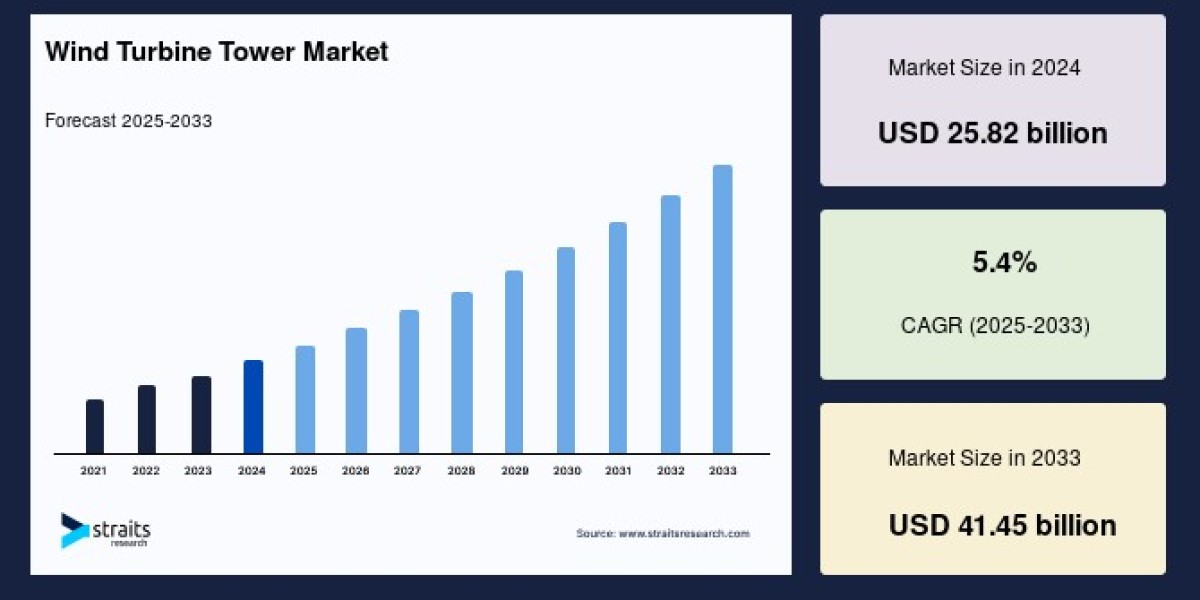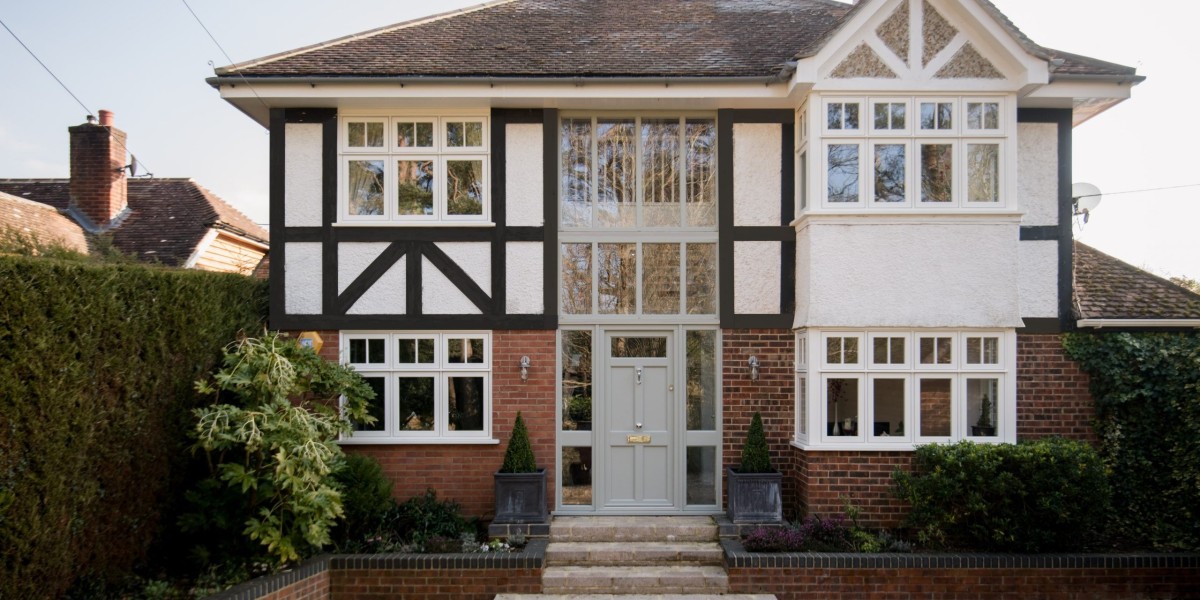The global wind turbine tower market size was valued at USD 25.82 billion in 2024 and is projected to grow from USD 27.22 billion in 2025 to USD 41.45 billion by 2033, exhibiting a CAGR of 5.4% during the forecast period (2025-2033).
Market Overview and Key Drivers
Wind turbine towers are vital components of both onshore and offshore wind farms, supporting turbine systems that convert wind into electricity. These towers are constructed from steel, concrete, or hybrid materials designed to provide height and stability for optimal wind capture. The market expansion is largely propelled by the urgent global push to reduce carbon emissions, shift toward renewable energy, and meet ambitious climate goals.
Governments worldwide are providing strong incentives, such as tax breaks and renewable energy targets, encouraging investment in wind power infrastructure. As a result, many countries are scaling up wind turbine installations in areas with high wind potential, including offshore and rural onshore sites. Policies aiming to achieve energy independence and decarbonization have created a robust pipeline of projects that bolster investor confidence and accelerate market growth.
Technological Innovations
Significant advancements in wind turbine design are transforming the tower market. Taller towers with larger rotor diameters allow turbines to access stronger and steadier winds at higher altitudes, greatly improving energy output and overall efficiency. Current towers often range between 80 and 120 meters for onshore setups, while concrete towers exceeding 200 meters are increasingly used for large-scale offshore and challenging terrains.
Manufacturers are also embracing modular construction and hybrid materials, such as steel-concrete composites, which enhance transportability, reduce costs, and improve durability in harsh environments like offshore locations. These innovations aid in scaling wind power capacity across varied geographies and meeting the demand for reliable, high-efficiency renewable energy solutions.
Regional Market Insights
Asia-Pacific stands as the largest market, fueled by China’s dominance in wind energy capacity and production. China’s government has implemented long-term subsidies and policies supporting massive investments in wind power infrastructure, making it the largest onshore wind energy producer globally. India also plays a significant role, targeting 140 GW of wind capacity by 2030 with large installations in wind-rich states.
North America is the fastest-growing market, led by the United States, where federal and state incentives such as the Production Tax Credit and Investment Tax Credit support wind energy projects. The U.S. is investing heavily in both onshore and offshore wind infrastructure, with notable developments in states like Texas and offshore projects along the Eastern Seaboard boosting tower demand. Canada contributes through renewable integration in energy-intensive regions.
Europe benefits from favorable wind conditions, especially for offshore development in the North Sea and Baltic Sea. The EU’s commitment to ambitious offshore wind capacity targets stimulates demand for specialized turbine towers designed to withstand marine conditions. Emerging Southeast Asian countries are also pursuing wind energy expansion, contributing to the region’s future growth potential.
Market Segmentation and Dominance
Onshore wind turbine towers dominate markets due to lower installation and maintenance costs compared to offshore alternatives. These towers are typically placed in open land areas with accessible infrastructure, optimized for moderate altitudes where wind patterns remain strong and consistent. Conversely, offshore towers require advanced durability and corrosion resistance to endure marine environments, often employing monopile foundations and hybrid steel-concrete structures.
Concrete towers are gaining traction for their superior strength and adaptation flexibility, particularly for large turbines in offshore and mountainous areas. Though they incur higher upfront costs compared to steel towers, concrete towers provide benefits such as vibration dampening and longevity, contributing to their rising market share.
Competitive Landscape
The global wind turbine tower market is highly competitive with major players focusing on innovation, capacity expansion, and geographical reach. Leading manufacturers like Siemens Gamesa, Arcosa, CS Wind, and Vestas dominate due to advanced technology, strategic production facilities, and commitment to renewable energy development.
Arcosa, a prominent North American manufacturer specializing in steel towers, has expanded capabilities to serve larger turbines and holds a competitive edge in delivering cost-effective and reliable solutions. Emerging companies such as Modvion are exploring eco-friendly alternatives, demonstrating the market’s shift toward sustainability and technological diversification.
Challenges and Opportunities
Despite robust growth, the market faces hurdles such as high initial investment and logistics costs related to manufacturing, transporting, and installing large tower sections. Specialized equipment and infrastructure requirements add to capital expenditure, which may deter investment in regions with less mature regulatory and financial environments.
However, offshore wind development presents significant opportunity. The shift to offshore farms in Europe, East Asia, and North America necessitates innovative, taller, and more durable towers, offering growth prospects for companies able to meet these advanced engineering demands. As technology matures and cost reductions occur, offshore wind is expected to become a cornerstone in the global renewable energy transition.
Outlook
The wind turbine tower market is set for sustained expansion driven by increasing renewable energy adoption, enhanced turbine technologies, and supportive government policies. With global efforts to combat climate change intensifying, investments in wind infrastructure will continue to rise, fostering innovation in tower designs and materials.
As countries diversify their energy portfolios and aim for net-zero targets, wind turbine towers will remain fundamental to unlocking greater wind power capacity worldwide. The increased focus on offshore wind, combined with the optimization of onshore installations, positions the market for dynamic growth through the next decade and beyond.













